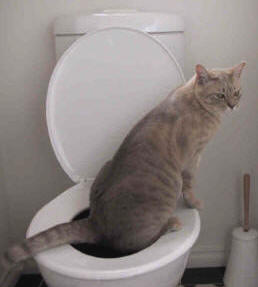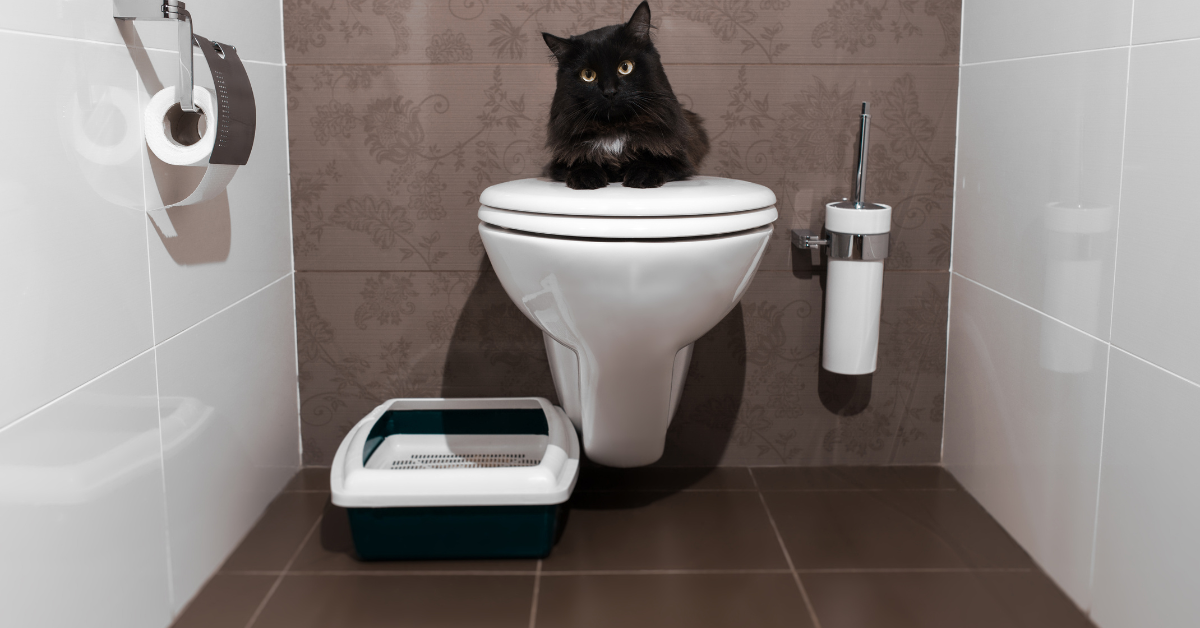How You Need to Never Dispose of Animal Waste Down the Toilet
How You Need to Never Dispose of Animal Waste Down the Toilet
Blog Article
The article directly below pertaining to Can You Flush Dog and Cat Poo Down the Toilet? is particularly motivating. You should see for yourself.

When it pertains to disposing of waste, particularly animal waste, lots of people commonly resort to the hassle-free option of flushing it down the commode. Nonetheless, this relatively very easy solution can have severe consequences for the environment and public health. In this short article, we'll discover why flushing pet waste down the commode is a bad idea and offer alternate techniques for appropriate disposal.
Introduction
Proper waste disposal is important for preserving environmental sustainability and public health. While it might appear harmless to flush animal waste down the toilet, it can lead to different concerns, both for the environment and human health.
Dangers of flushing animal waste
Ecological influence
Flushing pet waste presents hazardous germs and pathogens right into waterways, which can adversely impact marine ecological communities. These microorganisms can contaminate water resources and injury marine life, interrupting fragile ecological communities.
Public health worries
Animal waste has harmful germs such as E. coli and Salmonella, which can present serious health threats to humans. Purging animal waste down the toilet can contaminate water products, causing the spread of diseases and infections.
Alternatives to flushing
Rather than flushing animal waste down the bathroom, there are several alternate disposal methods that are a lot more eco-friendly and sanitary.
Composting
Composting pet waste is a green method to throw away it. By composting, raw material is broken down right into nutrient-rich dirt, which can be made use of to feed yards and plants.
Land fill disposal
Throwing away pet waste in a landfill is one more choice. While not as eco-friendly as composting, it is a safer option to flushing, as it stops the contamination of water resources.
Animal waste disposal systems
There are specialized animal waste disposal systems offered that safely and hygienically deal with pet waste. These systems frequently make use of enzymes to break down waste and get rid of smells.
Steps to appropriate pet waste disposal
To make certain proper disposal of animal waste, adhere to these actions:
Scooping and nabbing waste
On a regular basis scoop and bag pet waste utilizing biodegradable bags. This avoids waste from polluting the atmosphere.
Making use of marked waste containers
Dispose of bagged animal waste in assigned waste containers, such as compost containers or garbage dump bins. Avoid flushing it down the commode in any way expenses.
Cleaning up litter boxes and animal areas routinely
Regularly tidy litter boxes and family pet areas to stop the build-up of waste and germs. Use pet-safe cleansing products to preserve health.
Benefits of correct disposal techniques
Adopting appropriate disposal methods for pet waste offers a number of advantages:
Minimized environmental pollution
Proper disposal techniques minimize the danger of environmental pollution, protecting rivers and ecological communities from contamination
Decreased danger of water contamination.
By preventing flushing animal waste down the commode, the risk of water contamination is dramatically decreased, guarding public health.
Enhanced cleanliness and health
Appropriate disposal techniques advertise much better sanitation and health, producing a safer setting for both people and pets.
Conclusion
Finally, flushing animal waste down the commode is hazardous to the setting and public health. By adopting different disposal approaches and following appropriate waste administration techniques, we can decrease the negative effect of pet waste and add to a cleaner, much healthier planet.
What To Do With Dog Poo – The Do's And Don'ts Of Disposing Of Faeces
Dog poo bins
Some councils provide dedicated dog waste bins in popular dog-walking areas that can take dog poo that has been bagged but you can legally dispose of dog waste in any public litter bin, as long as it is securely bagged. This also applies to your wheelie bin at home.
Do not flush
Water companies do not recommend flushing dog faeces down the toilet because certain parasites can survive the water processing treatment and are potentially harmful to humans. You should also never consider flushing dog poo that has been bagged down the toilet as the bags will not break down and instead create severe blockages in the sewage system.
In the woods
The Forestry Commission promotes a ‘stick and flick’ method for dealing with waste in the woods. This means finding a stick and using it to flick any poo from off the path so that it is out of the way of other walkers. You could also bury it as long as it is not in an area where there might be livestock.
Livestock
Parasites found in dog poo can be transmitted to livestock if they inadvertently eat infected faeces that has been left on grazing land. This could result in the death of sheep or abortion in cattle so you should always make sure you pick up your dog’s waste in fields where livestock could be present.

Regularly tidy litter boxes and family pet areas to stop the build-up of waste and germs. Use pet-safe cleansing products to preserve health.
Benefits of correct disposal techniques
Adopting appropriate disposal methods for pet waste offers a number of advantages:
Minimized environmental pollution
Proper disposal techniques minimize the danger of environmental pollution, protecting rivers and ecological communities from contamination
Decreased danger of water contamination.
By preventing flushing animal waste down the commode, the risk of water contamination is dramatically decreased, guarding public health.
Enhanced cleanliness and health
Appropriate disposal techniques advertise much better sanitation and health, producing a safer setting for both people and pets.
Conclusion
Finally, flushing animal waste down the commode is hazardous to the setting and public health. By adopting different disposal approaches and following appropriate waste administration techniques, we can decrease the negative effect of pet waste and add to a cleaner, much healthier planet.
What To Do With Dog Poo – The Do's And Don'ts Of Disposing Of Faeces
Dog poo bins
Some councils provide dedicated dog waste bins in popular dog-walking areas that can take dog poo that has been bagged but you can legally dispose of dog waste in any public litter bin, as long as it is securely bagged. This also applies to your wheelie bin at home.
Do not flush
Water companies do not recommend flushing dog faeces down the toilet because certain parasites can survive the water processing treatment and are potentially harmful to humans. You should also never consider flushing dog poo that has been bagged down the toilet as the bags will not break down and instead create severe blockages in the sewage system.
In the woods
The Forestry Commission promotes a ‘stick and flick’ method for dealing with waste in the woods. This means finding a stick and using it to flick any poo from off the path so that it is out of the way of other walkers. You could also bury it as long as it is not in an area where there might be livestock.
Livestock
Parasites found in dog poo can be transmitted to livestock if they inadvertently eat infected faeces that has been left on grazing land. This could result in the death of sheep or abortion in cattle so you should always make sure you pick up your dog’s waste in fields where livestock could be present.

Do you really like reading up on Should you flush animal waste down the toilet? Post feedback further down. We'd be glad to listen to your feelings about this posting. Hoping to see you back again before long. So long as you liked our article kindly do not forget to share it. Thanks a lot for going through it.
Book An Appointment Report this page